Moss as Mulch
With its gorgeous pelt and low profile, moss acts a lush unifying force in a permaculture garden, softening edges and combining elements in a way that no other planting or installation possibly could.
Moss as Mulch
With its gorgeous pelt and low profile, moss acts a lush unifying force in a permaculture garden, softening edges and combining elements in a way that no other planting or installation possibly could.
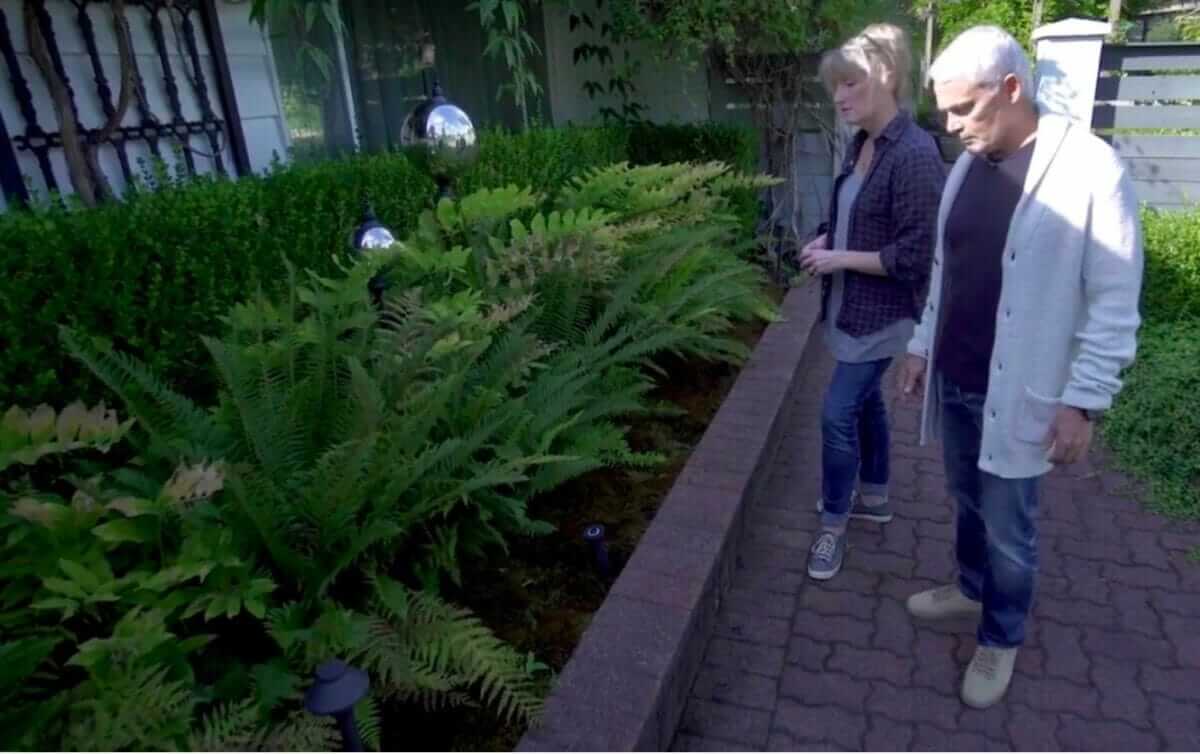
Chatting with Modern Farmer publisher Frank Giustra about saving water by mulching raised beds with moss
Green tongue liverwort, broom, hook, frecklepelt, and sickle. Not potions and characters from a Harry Potter novel, rather common names for just a few of the gorgeous mosses, liverworts and lichens that populate the temperate rainforests and coastal ranges where I live. Moss, in particular is beautiful, practical and righteous in the home garden. I believe that if we all knew just how alive and essential moss is to natural systems, we wouldn’t be so quick with the power rake and power washer. What’s not to love about a soft, deep, vibrant green carpet that mulches naturally, retains and filters water, sequesters CO2, keeps weeds at bay, provides valuable natural habitat for insects and invertebrates, and requires little to no maintenance?
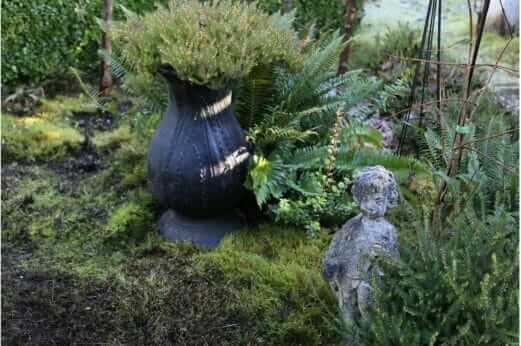
Moss is pre-historic, dating back over 450 million years, and can be found in one form or many on each of the seven continents. Moss is winter-hardy as it contains a natural anti-freeze, allowing it to bounce back even after being trampled flat when seemingly frozen. Moss does not need to be mowed, is not invasive (prolific, yes), and provides unparalleled natural erosion control. With its gorgeous pelt and low profile, moss acts a lush unifying force in a permaculture garden, softening edges and combining elements in a way that no other planting or installation possibly could.
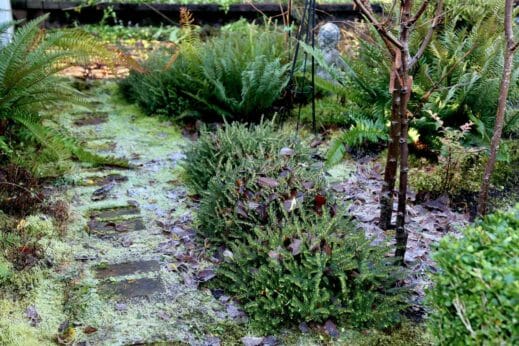
I have always been drawn to moss, and was fortunate enough to wade waste-deep through it, in the magnificent old growth forests of the Clayoquot Sound Biosphere Reserve on Vancouver Island. Between the heady, ancient aroma that my footfall released from the living forest floor, and the super-oxygenated, antimicrobial phytoncides exhaled by the trees, it was all I could do to stay upright. In small doses those same elements live in my home garden, gifting me in wisps and puffs as I go about my business. These gifts are available to anyone who sees the value in letting nature takes its course, in the shade or part shade of the tiniest of gardens.

I have raised vegetable beds, and several large container beds in full sun, and for many reasons, they do not contain any moss. The pollinator turf, lawn, part-sun beds, and ground-level beds that surround them however are home to masses of mosses of all kinds. I encourage this arrangement because I water far less, I weed not at all, and it is just so damn beautiful. In all of our ground level gardens and borders, regardless of what trees, ferns or perennials grow there, the soil is covered almost entirely by moss and naturalized ground covers like wild violets, bloody dock, false lily of the valley, bleeding heart, foam flower, and lady fern. The moss is encouraged to spill over onto pathways and pavers, covering rocks, terra cotta pots, and anything else slightly porous that stands in its way.
If you have no moss in your garden but would like some, it is very easy to propagate. First, make sure conditions are favourable and that the starter site isn’t too sunny or dry. Established moss can take quite a bit of sun, but you won’t get great results if you start out there. Damp, part-shaded soil on the ground or in a pot, works well as a canvas. Porous or rough surfaces like garden statuary, stones, bricks, pavers, work very well also. Search your neighborhood or town for some beautiful, healthy moss — check north-facing courtyards, wooded areas, aging wood piles — and take a few handfuls home (without damaging its environment). Shred or break the moss up into very small pieces, and mix it vigorously into some yogurt of buttermilk to form a loose slurry. Paint, rub or drizzle the moss mixture onto your target area, and wait, keeping the area lightly misted.
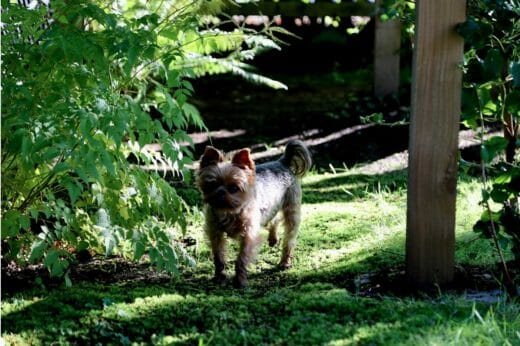
Soon enough, you will see a greening up. Be sure to keep your surface evenly moist but not soaked, until the moss is well established. I’ve done this many times on terra cotta and stone pots, and garden statuary, most particularly when the addition of something new and unblemished would look out of place in the gardens of our 72 year-old home. Watering high-traffic, moss-covered areas like the pathway above with a four to one mixture of water and buttermilk, in the spring and as needed, will help keep the moss happy and healthy.
Most recently I packed starter moss slurry onto both sides of a very long raised lavender bee berm built over a swale that I created around the perimeter of our boulevard. The lavender berm is rather like a 12″ high hill of living soil that sits directly overtop of an 18″ deep dry well that runs along the edge of the boulevard, set back from the road only 2ft. The installation is just one year old and still quite fragile as far as soil erosion goes.
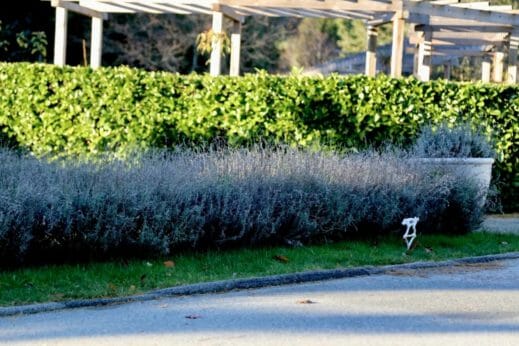
We’ve been having trouble with neighborhood dogs walking over the berm and breaking down its walls. To fortify the soil structure and create a living green ‘crust’ of sorts along the entire surface of the berm, I’ve been adding an extremely watered down moss slurry fairly regularly. Patches of lovely green are starting to grow here and there, and I am certain that within another year the berm will be dog-friendly — covered entirely with moss, providing both habitat and structural integrity.
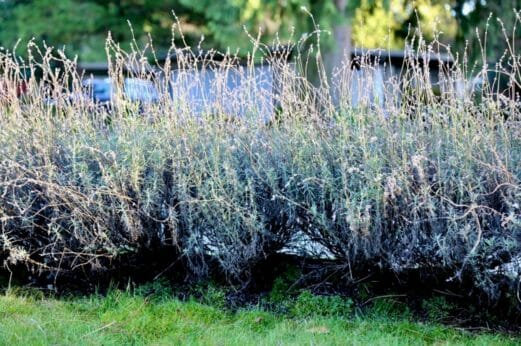
It seems counter-intuitive to plant moss on a sunny lavender slope, but since the berm is made up solely of organic compost mixed together with small cracked gravel, the moss grabs hold nicely, much as it would on decaying wood or the forest floor. Moss has no roots, rather it grabs hold with tiny foot-like rhizoids, absorbing water and nutrients primarily through its leaves, where it stores them until needed. Mosses are extremely resilient plants, happy to set up just about anywhere they can find water.
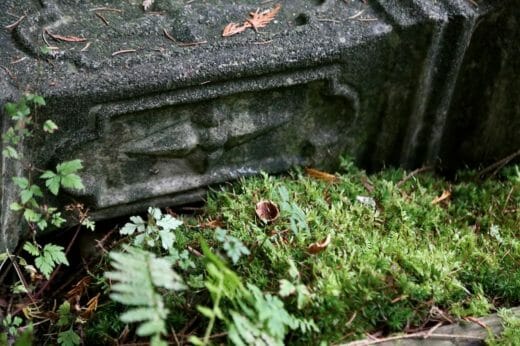
In her fascinating book ‘Gathering Moss – A Natural and Cultural History of Mosses’ author and Professor of Environmental and Forest Biology, Robin Wall Kimmerer, uncovers the magic, mystery, and life-giving nature of moss. “One gram of moss from the forest floor, a piece about the size of a muffin, would harbour 150,000 protozoa, 132,000 tardigrades, 3,000 springtails, 800 rotifers, 500 nematodes, 400 mites, and 200 fly larvae. These numbers tell us something about the astounding quantity of life in a handful of moss.”
In the small and dark back corner of our yard, where birds and squirrels nest in the hemlock and spruce, and the moss grows seven decades deep, there exists another world. I sit on the ground and inhale the ancient, heady aroma, and count my blessings.
Follow us
This work is licensed under a Creative Commons Attribution-NoDerivatives 4.0 International License.
Want to republish a Modern Farmer story?
We are happy for Modern Farmer stories to be shared, and encourage you to republish our articles for your audience. When doing so, we ask that you follow these guidelines:
Please credit us and our writers
For the author byline, please use “Author Name, Modern Farmer.” At the top of our stories, if on the web, please include this text and link: “This story was originally published by Modern Farmer.”
Please make sure to include a link back to either our home page or the article URL.
At the bottom of the story, please include the following text:
“Modern Farmer is a nonprofit initiative dedicated to raising awareness and catalyzing action at the intersection of food, agriculture, and society. Read more at <link>Modern Farmer</link>.”
Use our widget
We’d like to be able to track our stories, so we ask that if you republish our content, you do so using our widget (located on the left hand side of the article). The HTML code has a built-in tracker that tells us the data and domain where the story was published, as well as view counts.
Check the image requirements
It’s your responsibility to confirm you're licensed to republish images in our articles. Some images, such as those from commercial providers, don't allow their images to be republished without permission or payment. Copyright terms are generally listed in the image caption and attribution. You are welcome to omit our images or substitute with your own. Charts and interactive graphics follow the same rules.
Don’t change too much. Or, ask us first.
Articles must be republished in their entirety. It’s okay to change references to time (“today” to “yesterday”) or location (“Iowa City, IA” to “here”). But please keep everything else the same.
If you feel strongly that a more material edit needs to be made, get in touch with us at [email protected]. We’re happy to discuss it with the original author, but we must have prior approval for changes before publication.
Special cases
Extracts. You may run the first few lines or paragraphs of the article and then say: “Read the full article at Modern Farmer” with a link back to the original article.
Quotes. You may quote authors provided you include a link back to the article URL.
Translations. These require writer approval. To inquire about translation of a Modern Farmer article, contact us at [email protected]
Signed consent / copyright release forms. These are not required, provided you are following these guidelines.
Print. Articles can be republished in print under these same rules, with the exception that you do not need to include the links.
Tag us
When sharing the story on social media, please tag us using the following: - Twitter (@ModFarm) - Facebook (@ModernFarmerMedia) - Instagram (@modfarm)
Use our content respectfully
Modern Farmer is a nonprofit and as such we share our content for free and in good faith in order to reach new audiences. Respectfully,
No selling ads against our stories. It’s okay to put our stories on pages with ads.
Don’t republish our material wholesale, or automatically; you need to select stories to be republished individually.
You have no rights to sell, license, syndicate, or otherwise represent yourself as the authorized owner of our material to any third parties. This means that you cannot actively publish or submit our work for syndication to third party platforms or apps like Apple News or Google News. We understand that publishers cannot fully control when certain third parties automatically summarize or crawl content from publishers’ own sites.
Keep in touch
We want to hear from you if you love Modern Farmer content, have a collaboration idea, or anything else to share. As a nonprofit outlet, we work in service of our community and are always open to comments, feedback, and ideas. Contact us at [email protected].by Laura Marie Neubert, Modern Farmer
December 4, 2020
Modern Farmer Weekly
Solutions Hub
Innovations, ideas and inspiration. Actionable solutions for a resilient food system.
ExploreExplore other topics
Share With Us
We want to hear from Modern Farmer readers who have thoughtful commentary, actionable solutions, or helpful ideas to share.
SubmitNecessary cookies are absolutely essential for the website to function properly. This category only includes cookies that ensures basic functionalities and security features of the website. These cookies do not store any personal information.
Any cookies that may not be particularly necessary for the website to function and are used specifically to collect user personal data via analytics, ads, other embedded contents are termed as non-necessary cookies.
thank you for info about moss. i live not far from your Vancouver Island in the states
Thank you for the interesting information